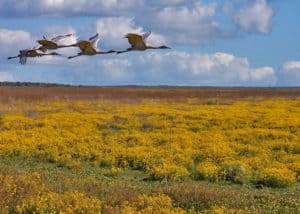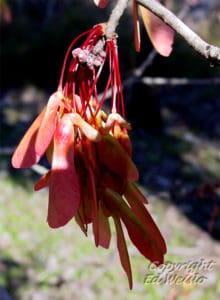It’s cold outside. All 50 states experienced freezing temperatures at the same time this past week for the first time since 1976. While these surprisingly low fall temperatures maybe old hat for the rest of the country, it’s a little on the cool side for those of us in Florida. At 20°F, Jacksonville, FL experienced the coldest temperatures on record for the month of November. It usually doesn’t get cold (at least Florida’s version of it) until January. So what does this mean for FL beekeepers? The last of the Spanish needle, primrose willow, and marsh marigold will be gone shortly, and queens will start slowing down brood production if they haven’t already. Now might be a good time to pull the fall honey crop you intend to harvest (being sure to leave some for the bees)and get ready for the cold. While it may not be wrapping hives in insulation (you will find this interesting to read), moving hives into potato sheds, or to warmer climates entirely, we in the sunshine state have our own version of dealing with winter months.

Contrary to what you might expect, Florida winters keep beekeepers busy. The warm temperatures keep the bees active all year long, and there will be nectar flow somewhere in the state at any given point. The temperature fluctuations are especially confusing when it can get to below freezing one day and be in the mid-80s the next. Queens will briefly stop laying and the hive will begin the wintering process just to be jerked into springtime-like conditions within a few days. However, just because the bees are flying doesn’t mean they are producing. For bees in Florida, spring starts at the beginning of December with the first bloom of red maple (see pic). With the need for hives to be boiling over with bees by the first of February for almond pollination in California or blueberry pollination in Florida, be sure to provide your bees with everything possible for a speedy spring buildup.

So if you live in warmer conditions and are wondering what you can do to protect your bees from these sub-tropical winters, here are a few tips compiled from folks I’ve talked to from around the state:
- Entrance reducers: Not only will entrance reducers help keep the warmth in the hive, they will hinder robbing behavior. Colonies can get weak in the winter, and stronger neighbors will take advantage of that fact.
- Solid bottom boards: While they are not essential, if temperatures get very low and you have the equipment, it doesn’t hurt to provide that extra layer of protection. This is not a practical solution for sideline or commercial beekeepers, but if you’re worried your hive is getting too much weather, its one small step you can take. You can also fashion solid bottom boards by sticking a piece of cardboard or similar material over the screen of your screened bottom board.
- Check for nectar and honey stores early: Don’t let them starve. The trick in the winter time is to keep the bees in a state of production so they are ready to pollinate almonds or make honey as early as possible. But remember, just because the bees are flying and bringing in pollen doesn’t mean they are making honey. If they are light, feed them thick syrup. If they are going on pollination or need to be ready to make citrus honey, stimulating them with thin (1:1 ratio) syrup in December and January can help bolster brood production.
- Watch Varroa mite levels: Honey Bees in Florida have brood all winter (if the queen does shut down its usually only a few days). That means mites have the opportunity continue to reproduce as well. Because bees will start making harvestable honey in March, be sure that you have sufficient time to complete a treatment cycle before adding honey supers.
Do you have any suggestions for winter preparations in Southern or Northern climates? We’d love to hear your input! Let us know in the comment section.